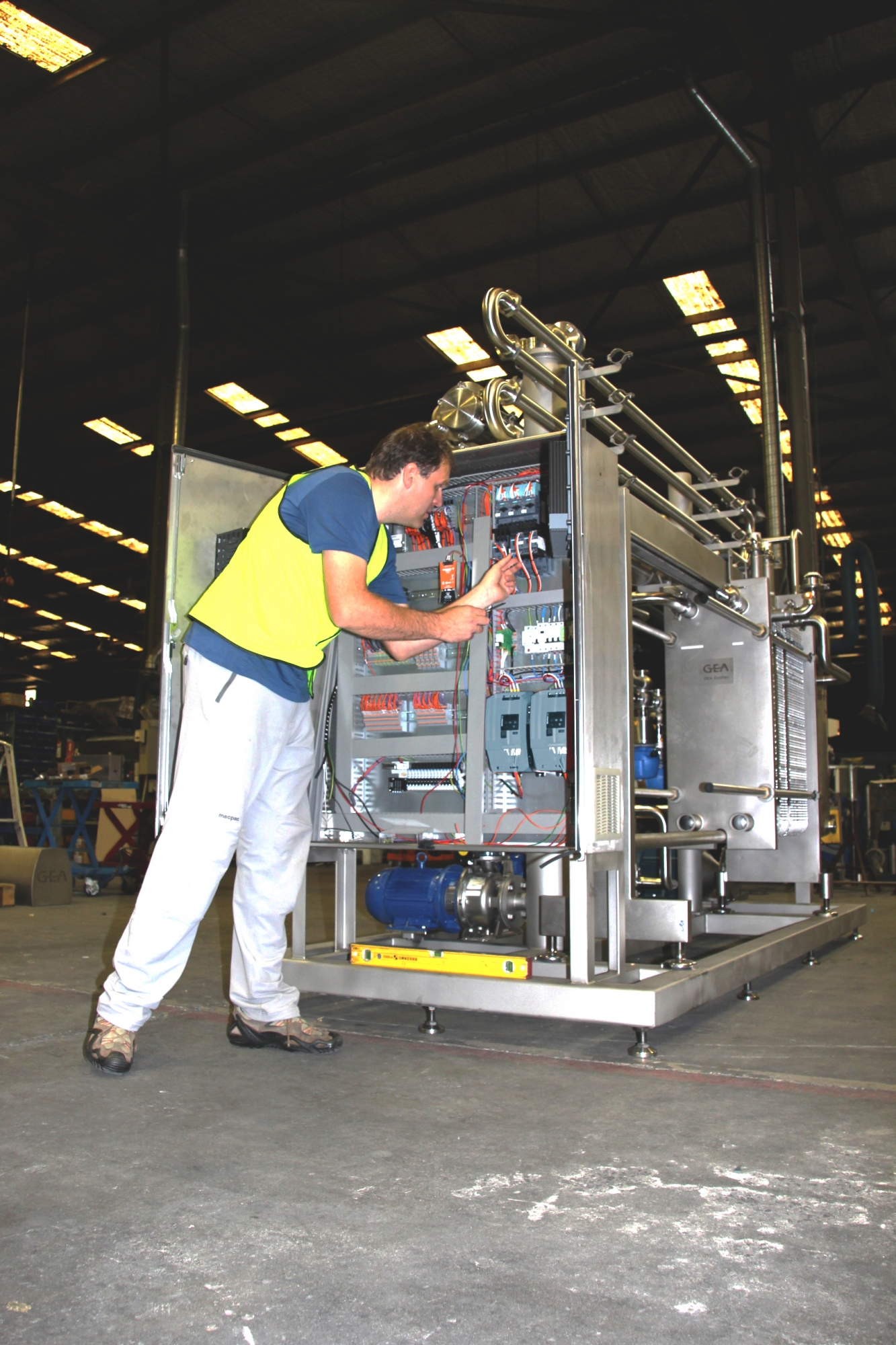DEBATE: Spring vs. screw terminals

Despite being around for 15 years, spring terminal motor control components have always been dominated by screw terminals in the Australian market. However, more and more local projects are now starting to specify the use of spring terminals over screw terminals. Siemens has released their new motor control range, with spring terminal option, reflecting this changing trend in the market.
According to automation engineer Rowan Finch, using spring terminals “just makes sense”. His company, Hipex, designs, manufactures and installs heat exchangers, equipment and systems for the food processing industry so durable solutions that can withstand heavy vibration and stress is top of mind for Finch.
ADVERTISEMENT
For the past three years, Rowan has procured spring terminal motor control components for his switchboard designs, all of which are built in his Melbourne facility, then shipped nationally and worldwide for on-site installation. For Rowan, spring terminals are the obvious choice and he explains why he wouldn’t use anything else, especially for systems being transported overseas.
“Even though they were properly secured during the build, screw type terminals used on our boards would become loose during transportation which meant we had to spend more time commissioning them on-site.
“But since we started using spring terminals, we’ve never had to re-torque any loose terminals pre- and post-commissioning, which has greatly reduced installation and maintenance times for our customers.
“Loosening wires remains an important risk for us, not only in terms of downtime and loss of production for our customers, but also from a safety perspective, which is why it just makes sense for us to use spring terminal connections that we know are highly unlikely to come loose.”
In addition to greater durability, Rowan is a strong advocate for spring terminal contactors because they are easier to install. The Original Equipment Manufacturer (OEM) attributes the quick wiring of spring terminals as a key benefit in speeding up his installation and commissioning times for clients.
“As with any large project, deadlines are continually being pushed out. With spring terminals, we can install our boards at a much faster rate, with greater accuracy, and ultimately, make up for lost time,” he adds.
Apart from saving costs from reduced installation and maintenance times, many other OEMs are now starting to adopt the use of spring terminal switchgear because more and more projects are beginning to specify this within their tenders.
The availability of spring terminal motor control gear has been somewhat limited in the Australian market with suppliers cautious about expanding their range due to the slow uptake. Until now, spring terminal motor controls were generally only available for applications up to 5.5kW. However, Siemens recently announced that their new generation SIRIUS range would now be available in both spring and screw type terminals, opening up the possibility for applications of up to 15kW, which represents approximately 95% of motors installed worldwide.
“The availability of spring terminals across a wide range of low voltage motor control gear is like an untapped gold mine for Australian industry,” claims Damien Lee who heads up this business unit for Australia and New Zealand.
“Taking advantage of spring terminals will provide Australian industries with the opportunity to boost productivity and cost efficiencies by way of reduced installation costs and maintenance times.
“The SIRIUS range has proven itself in all industries, including automotive, food and beverage, manufacturing and any environments that are subject to heavy vibration.”
From food and beverage right through to transportation, the Siemens SIRIUS range of spring terminal switchgear are starting to be installed in some of the most heavy-duty industries, turning around the popularity polls of screw terminal switchgear.
According to Rowan, motor controls are something that are often overlooked for improvement efforts but could bring significant cost benefits, especially for time-pressured OEMs.
“Motor control gear is like the fast moving consumer goods of the electrical industry – as long as they perform, there is little consideration for trying something different and hence why many people have continued to use screw terminals for such a long time.
“It’s often the big ticket items that get all the innovation attention. But as we’ve found, switching to spring terminals have significantly reduced our manufacturing, installation and maintenance times, which has also led to substantial cost savings for us and our customers.”
-
ADVERTISEMENT
-
ADVERTISEMENT

